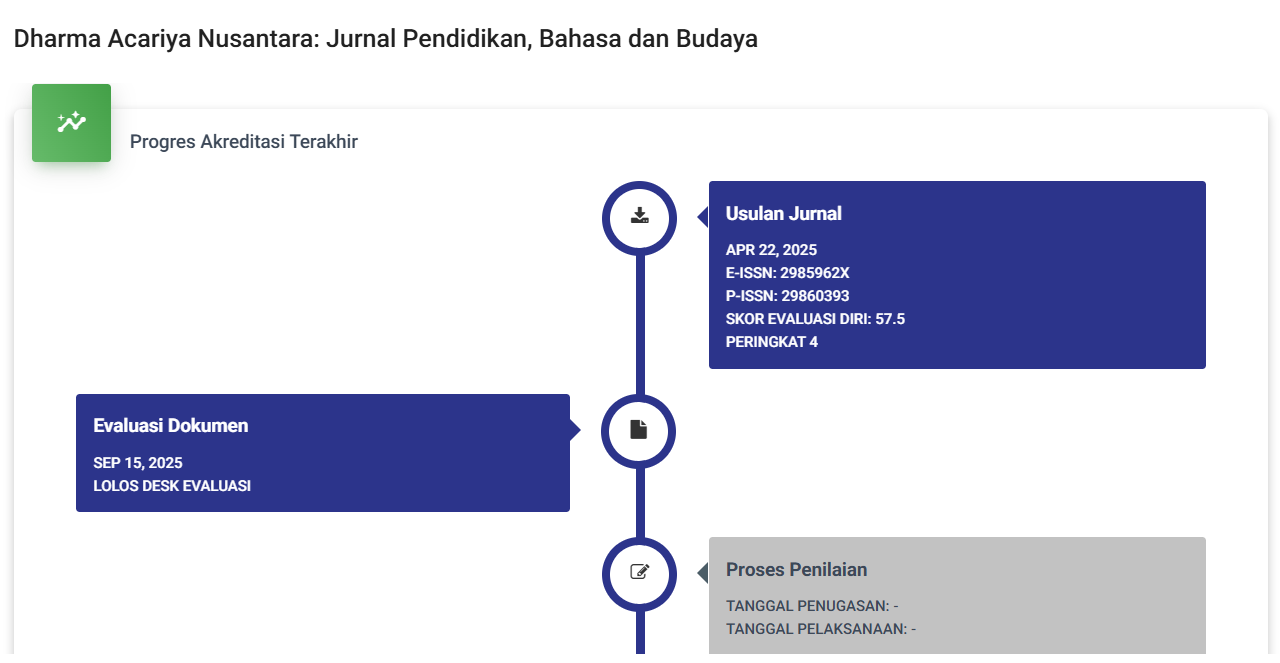Analisis Gerak Tari Galombang di Sanggar Sumarak Alam Minangkabau
DOI:
https://doi.org/10.47861/jdan.v2i2.1235Keywords:
Analysis, Dance Movement, Galombang DanceAbstract
This research aims to describe and know in depth about the Galombang Dance Movement at the Sumarak Alam Minangkabau Studio. This type of research is qualitative research with a descriptive method. The research instrument is the researcher himself and is assisted by supporting instruments such as stationery and cameras. Data were collected through literature studies, observations, interviews and documentation. The steps of analyzing data are identifying data, describing data, classifying data, analyzing data and drawing conclusions. The results of the study show that the galombang dance can be seen from the aspect of space, time, and energy. The galombang dance has several spatial elements, namely, in each movement of the galombang dance the dancer uses a dominant line that is straight in shape in the entire movement which gives the impression of calm and balance. The dominant volume is found in large and medium wave dance movements. The dominant facing directions are front, right diagonal and left diagonal. The level contained in the galombang dance movements is low and medium level, because many movements use pitunggua with the focus of the dominant head gaze forward and downward focusing on the direction of the hands. The time aspect in this galombang dance is dominated by using medium and fast tempos where fast movements describe the strength and enthusiasm of the community in carrying out daily life activities in carrying out farming activities. A rhythm that repeats from start to finish (repetitive) has an impression of regularity and balance that gives a consistent impression to each movement. The energy aspect of the galombang dance in intensity is moderate and strong in each movement, with dance movements that are performed repeatedly. The intensity is weak only in the initial movement, while for pressure (accent) there are in several movements such as the playboy movement, the sambah movement, the maagiah kaba movement, the closing movement. In addition, there are also some movements that are not too strong and not weak, namely moderate. The quality used is predominantly medium because in motion it follows the code of the sound of gandang, the energy expended is continuously moving with energy that is getting more and more up, so that the galombang dance seems excited and makes the movements in the galombang dance come alive.
References
Derajat, U. M. S. P. M., & Hajar, S. (2008). Hubungan antara kemandirian belajar dan kreativitas seni tari dengan minat belajar mata kuliah koreografi di ISI Surakarta.
Desfiarni, D. (2004). Tari Luka Gilo: Sebagai rekaman budaya Minangkabau praislam: Dari magis ke seni pertunjukan sekuler (pp. 1-169). Kalika.
Indrayuda, I. (2006). Fenomena kontemporer dalam karya tari mahasiswa Sendratasik FBSS UNP dan STSI Padang Panjang: Studi kasus karya koreografi mahasiswa tari.
Indrayuda, I. (2012). Eksistensi tari Minangkabau: Dalam sistem matrilinial dari era nagari, desa dan kembali ke nagari (pp. 1-253). UNP Press.
Indrayuda, I., & Ardipal, A. (2017). Women domination in the Galombang dance: Between the customary idealism and the market use. Harmonia: Journal of Arts Research and Education, 17(2), 153-162.
Jazuli. (2008). Pendidikan seni budaya: Suplemen pembelajaran seni tari. Semarang Press.
KBBI. (2008). Kamus Besar Bahasa Indonesia. Balai Pustaka.
Kemendikbud. (2017). Kompetensi inti dan kompetensi dasar pelajaran pada Kurikulum 2013 pada pendidikan dasar dan menengah. Kemendikbud.
Moleong, L. J. (2007). Metodologi penelitian kualitatif. PT Remaja Rosdakarya.
Moleong, L. J. (2012). Metodologi penelitian kualitatif. PT Remaja Rosdakarya.
Rukmini, D. S. (2023). Radap Rahayu: Tarian penghormatan Nagara Dipa. CV Adanu Abimata













